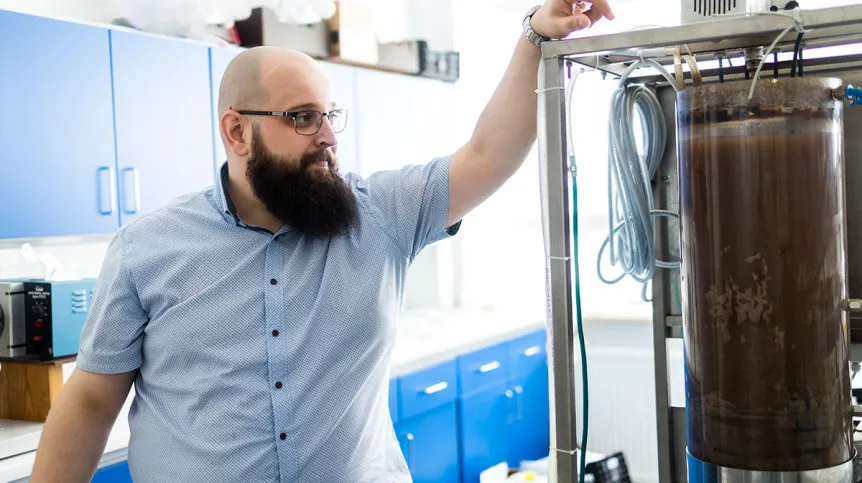
Scientists from the Bialystok University of Technology have patented a method for producing aerobic granulated activated sludge. The technology may accelerate biological wastewater treatment, and after implementation - reduce the costs of operation of sewage treatment plants by reducing the amount of problematic sediment.
Co-author Dr. Piotr Ofman from the university’s Department of Technology in Environmental Engineering said: “Our solution can be implemented in wastewater treatment plants, in which the process line is based on the use of sequential biological reactors.”
FASTER BIOLOGICAL WASTEWATER TREATMENT
According to the university, although the method was invented and implemented over a decade ago, it is used in just a dozen or so industrial and urban treatment plants in the world. In Poland, it is used by the Ryki treatment plant.
The reason for this, says the university, may be the ongoing basic research on granulated activated sludge.
Their method uses a 'consortium of microorganisms' for biodegradation of carbon compounds and nitrogen and phosphorus forms. The biomass forming in this process takes the form of granules. The sludge falls much faster than the conventional, flocculent sludge. As a result, there is no need to use multi-chamber reactors and recirculation. This solves many operational problems and reduces the costs of the treatment plant operation.
bAccording to Dr. Ofman, aerobic granules of activated sludge are resistant to changes in the quality characteristics of wastewater flowing into the treatment plant. Thanks to this, the effects of biological removal of pollutants present in wastewater are more stable. The scientist believes that the new method will reduce the sequential reactor work cycle, specifically the sedimentation phase.
He said: “This allows us to plan a reactor strategy differently and, as a consequence, reduce investment costs related to the construction of retention tanks for storing raw sewage.”
The researchers have observed that aerobic granules of activated sludge grow slightly more slowly compared to activated sludge flocs. In practice, this means that the treatment plant has less sludge to discharge from the wastewater treatment system.
While conducting research in the SBR sequential biological reactor, the scientists also analysed the transformation of nitrogen forms during the granulation of activated sludge flocs. Based on their observations, they predict that it is possible to maintain the required quality of treated wastewater while shortening the aeration phase. They emphasize that aeration is one of the most energy-intensive processes in wastewater treatment plants.
Dr. Offman said: “Reducing wastewater aeration time translates into a reduction in operating costs related to electricity consumption.”
THE PATENT OPENS THE WAY TO INDUSTRIAL USE
The patent No. 424590 for the invention 'Method of production of aerobic granulated activated sludge' was awarded on July 26, 2022.
Dr. Ofman's team has shown that the intensity with which the transformation of nitrogen forms occurs increases with the degree of granulation of activated sludge. The scientists are currently working on modifying the patented method of activated sludge granulation. They predict that their research results will also find industrial applications.
Offman said: “Obtaining a patent will make it easier for us to secure funds for further research that we would like to conduct on a larger scale and, if possible, in real conditions.”
PAP - Science in Poland
kol/ agt/ kap/
tr. RL













